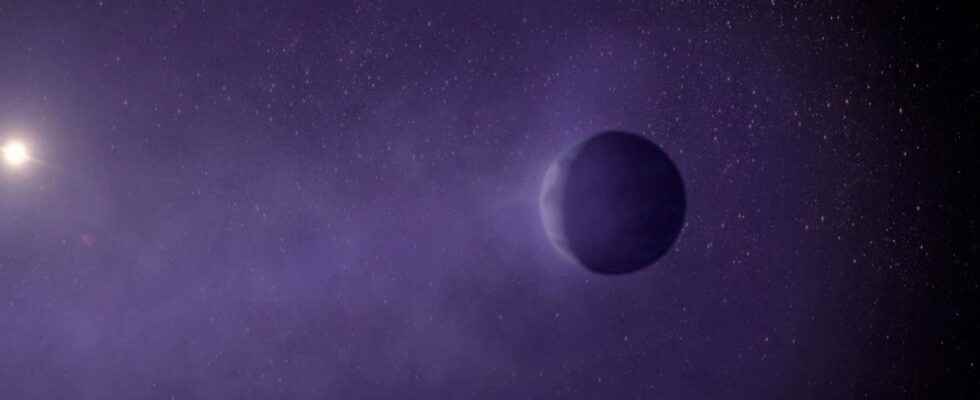There are many mini-Neptunes among exoplanets. Planets which, like our Neptune, are essentially composed of hydrogen and helium. Astronomers have just found two of them that are losing their atmosphere and are preparing to switch to a new class of exoplanets, that of the super-Earths.
You will also be interested
[EN VIDÉO] Will this super-earth reveal the secrets of its atmosphere to us? Astronomers here take us on a virtual journey to Gliese 486b. This rocky exoplanet is located 26 light years from our Earth, somewhere on the side of the constellation Virgo. A proximity – added to a few other interesting characteristics – which gives researchers hope that they will be able to study its atmosphere in detail. To better understand how Earth-like planets form and whether those orbiting red dwarfs are likely to harbor life. © Max Planck Institute for Astronomy
A mini Neptuneit is a planet with a rocky core, but surrounded by a thick atmosphere. A planet like astronomers have already identified many of them in orbit around others stars than our Sun. In the star system called TOI 560, some 103 light-years from Earth, for example. Or, around HD 63433, about 73 light years from our Solar system.
From researchers of the’caltech university (United States) turned towards them the instruments of the WM Keck Observatory (Hawaii) and the Hubble Space Telescope to study them more closely. And they discovered that gas escapes from the innermost mini-Neptune of the TOI 560 system — i.e. TOI 560.01 — and from the outermost mini-Neptune of HD 63433 — i.e. HD 63433 c. What to suggest that these two exoplanets could be transforming… into super-earths.
Models developed by astronomers predicted the phenomenon, but it had never been confirmed by observation. Researchers envision mini-Neptunes with primordial atmospheres made of hydrogen andhelium. Elements remaining from the formation of their star host. If a mini-Neptune-like exoplanet is small enough and close enough to its star, the X-rays stars and radiation ultraviolet should be able to eliminate its primordial atmosphere over a period of hundreds of millions of years. As a result, there would remain a rocky super-Earth with a significantly smaller radius. And a priori, a relatively thin atmosphere, similar to that which surrounds our planet.
Mini-Neptune TOI 560.01 is about 2.8 times larger than Earth. Its atmosphere is essentially composed of hydrogen and helium. A helium which is currently escaping in quantity. Letting think that within a few hundred million years, this exoplanet will have joined the rank of super-Earths. © Adam Makarenko, Keck Observatory, NASA Video
A phenomenon that remains to be understood
This explains why astronomers have observed only a few planets of intermediate size. Between mini-Neptune and super-Earth. Because a planet of intermediate size would still intercept enough radiation to rapidly lose its atmosphere and therefore its diameter. It would thus remain only a short time in this domain of “intermediate sizes”.
It was by studying the passage of exoplanets in front of their host star that astronomers obtained the valuable data that led them to these conclusions. They indeed found, on the side of TOI 560.01, helium signatures. And on the side of HD 63433 c, hydrogen signatures. On the other hand, nothing for HD 63433 b, the system’s internal mini-Neptune. Which may have…already lost its atmosphere.
The measured velocity of the gases in question gave evidence of losses in the atmospheres. Astronomers evoke 50 kilometers per second (km/s) for the hydrogen of HD 63433 c and 20 km/s for the helium of TOI 560.01. The extent of the flows confirms the phenomenon: it reaches 12 times the radius of the planet for HD 63433 c and 3.5 times the radius of the planet for TOI 560.01. With in this case, gases which leak in the direction of the host star. Contrary to what the models predict…
Interested in what you just read?
